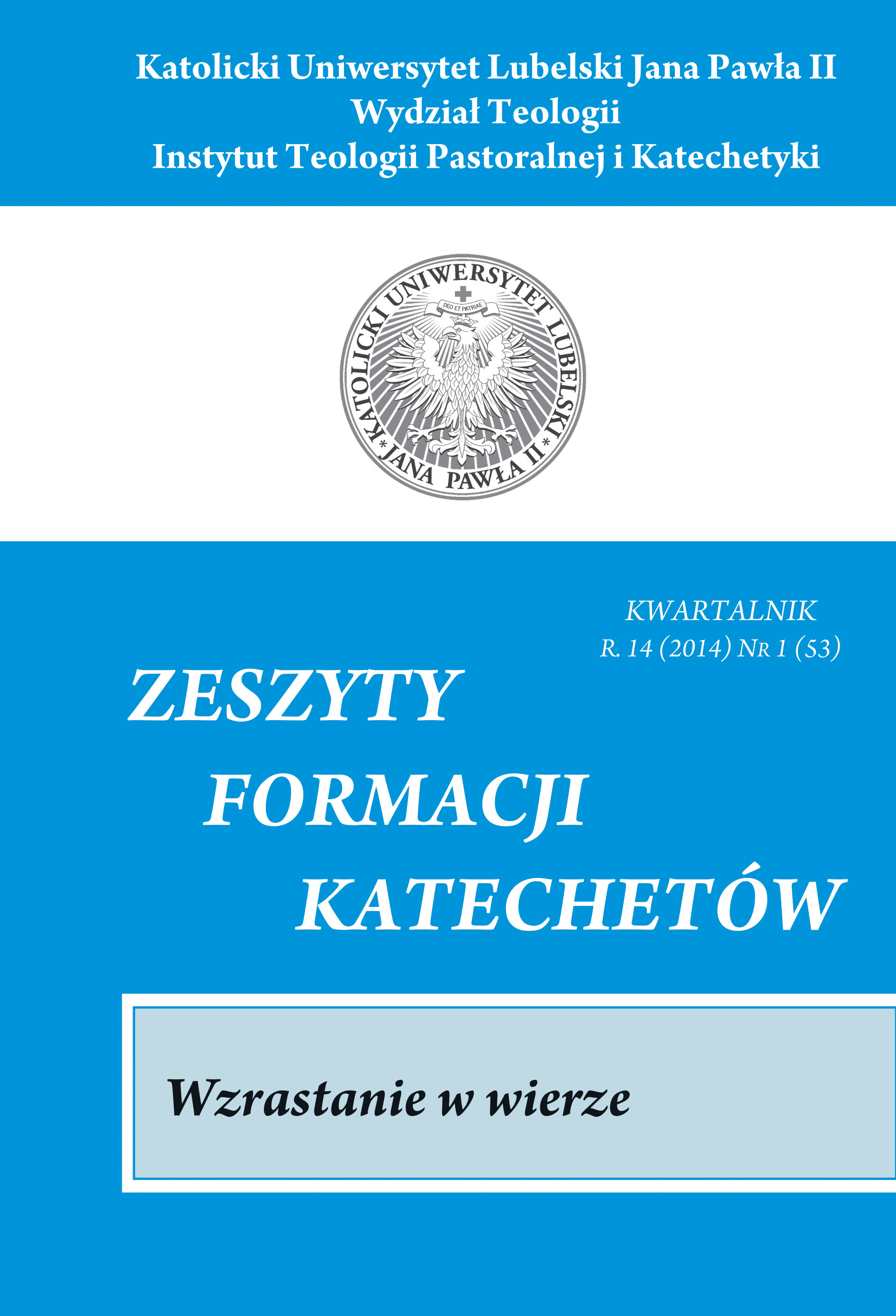"Lectio divina" – a way to strengthen the faith in Jesus the Son of Godin the light of Mt 14,22-33
Keywords:
faithAbstract
The starting point of each lectio divina is always the understanding of a biblical text. The reward for the understanding of the text and accepting its message is the readiness to go to thenext stage of lectio divina, which is meditation. Meditation extends the process of reading andaims to explore the spiritual sense of the biblical text. The last two stages of lectio divina involve our response to the received Word. We do this first during our prayer (oratio), which should answer the question: "What will I tell the Lord in response to his word?". The responseto the received Word should then turn into contemplation (contemplatio), in other words, into being close to Jesus. Contemplation should involve rejoicing the presence of Jesus in our lives, experiencing his love, receiving his power and professing our faith in him as the Son of God.
References
Fabris R., Matteo, Roma 1982.
Haręzga S., Duchowa lektura Biblii, w: Omnia transeunt – Caritas manet. Księga Jubileuszowa dedykowana Księdzu Profesorowi Władysławowi Głowie w siedemdziesiątą rocznicę urodzin, red. H. Słotwińska, L. Pintal, M. Wyrostkiewicz, Lublin 2012.
Paciorek A., Ewangelia według świętego Mateusza rozdziały 14-28. Wstęp – Przekład z oryginału – Komentarz, cz. II, Częstochowa 2008.
Wons K., Ty wiesz, że Cię kocham. Rekolekcje ze św. Piotrem, Kraków 2010.
Downloads
Published
How to Cite
Issue
Section
License
Copyright (c) 2014 KATECHISTS' PERIODICAL

This work is licensed under a Creative Commons Attribution-NonCommercial-NoDerivatives 4.0 International License.

